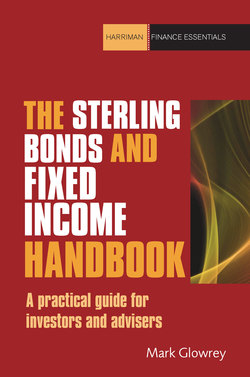Читать книгу The Sterling Bonds and Fixed Income Handbook - Mark Glowrey - Страница 20
На сайте Литреса книга снята с продажи.
Investment banks
ОглавлениеIt is fair to say that investment banks (IBs) are the bond market. The reverse is also true; the bond market consists of investment banks. A study of the results of the major players such as Goldman Sachs, or the late Salomon Brothers or even our own domestic operators such Barclays Capital, show that it is in bonds and their associated derivatives that the greatest returns are to be achieved and the largest positions found. Not surprisingly, it is also where the greatest losses appear from time to time. Why? Because bond markets are scaleable and open to bulk trading, enabling the highly aggressive and ambitious IBs to put on trades by the billions.
Standing aside from the proprietary trading activities of the investment banks, these organisations have two important roles to fulfil. The first is issuance. New bond issues, sometimes known as the primary market, is the meat and drink of the investment banking industry. Major borrowers need to issue large amounts of bonds, and to do so regularly. This business is fee-generating for the IBs, and repeatable. In addition to the fees charged by the IBs (perhaps 0.4% of the sum raised on a ten year bond), there is a considerable amount of additional revenue that can be generated from offering hedging or related swap contracts, both to the issuer and the buyers of the bonds.
The bankers will constantly be scanning the financial markets looking for opportunities, and pitching deals to their client base. Primary bond market activity is one of the most hotly contested activities in the financial world and the league table of issuance is closely followed each year. Here’s how 2010’s league table for the sterling market panned out, according to Bloomberg.
